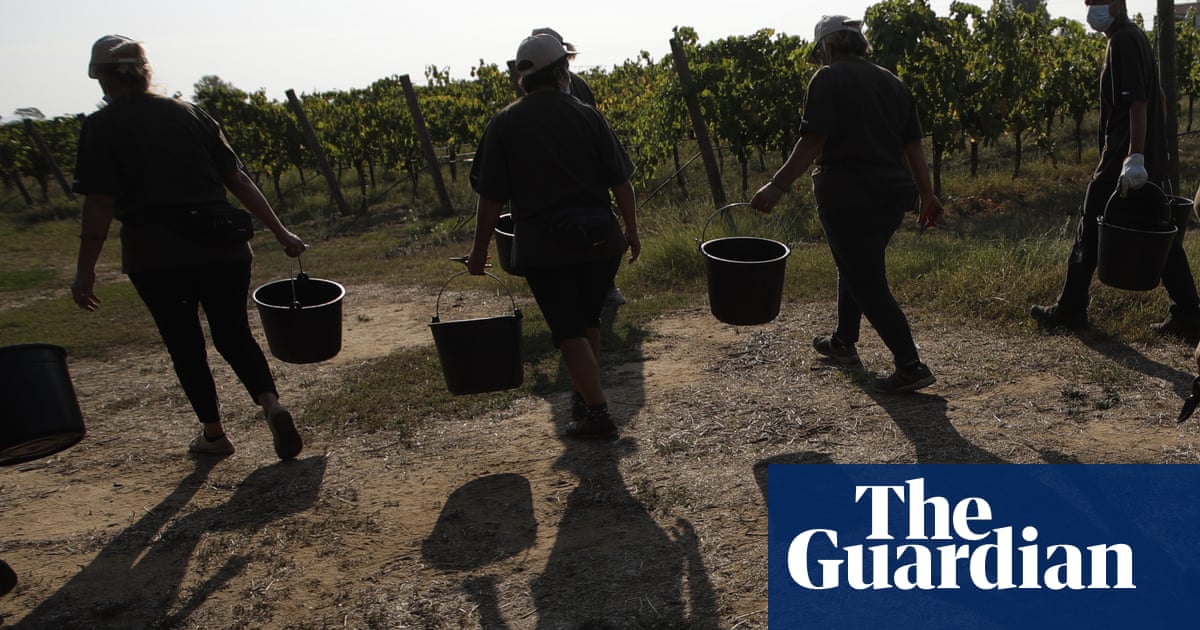You are in denial about the climate crisis. We all are, argues the American scholar Tad DeLay. Right-wing climate deniers are not the only ones with a problem, he says when we speak in early June after the release of his book, Future of Denial. For denial doesnât only amount to rejecting the evidence, he argues â it also consists of denying our role in the climate crisis; absolving ourselves through âcarbon offsets, hybrid cars, local purchases, recyclingâ. And in this, far more of us are implicated.
In some ways, this argument might not seem all that new. Multiple authors have pointed out that green capitalism, not rightwing deniers of the crisis, is our greatest obstacle to properly confronting the problem. DeLay agrees. The difference is the lens he brings to it â using psychoanalysis to explain the mechanisms behind denial.
In doing so he refuses the neatness of a definite or concretely optimistic path forward. Elaborate yet accessible â one chapter tells the history of Earth through rising and falling carbon dioxide â Future of Denial is an eloquent, forthright text about the realities of the crisis and where it is heading. Similarly, when we speak, he is friendly, open and does not seem to wallow in despondency, but his research has led him to informed conclusions that recognise the uncertainty and difficulty of where we are. He forgoes âhow to solve the crisisâ answers. To offer up such promises would, I imagine, itself be a form of denial.
DeLay looks to Freud for a framework to understand denial: individuals negate distressing ideas and when the repressed thoughts begins to surface, people either deny reality or accept it but deny their moral culpability. This is how people respond to the climate crisis: rejecting the science or committing to âpseudo-solutions, gimmicks and false promisesâ to get themselves off the moral hook. âI like to joke that America and many western countries conveniently have a political party for whichever form of denial you would like with regard to the climate,â he says.
Raised as part of a âvery Baptist evangelical fundamentalist megachurchâ in Little Rock, Arkansas, he thought he would be a minister, but when he started reading theology and philosophy everything began to fall apart. As a first-generation college student, the literature, plus psychoanalysis, gave him a language to think through and out of the very religious âconceptual and cultural baggageâ with which he grew up. DeLay brings all of his interests â psychoanalysis, philosophy and religion â to bear on the climate crisis.
One impetus for writing Future of Denial, he says, was watching the UK Labour partyâs 2019 manifesto and US Democrat Bernie Sandersâ 2020 presidential campaign proposals âget rejected largely by people who probably thought of themselves as science believers even though both of them were proposing the most ambitious climate plansâ these countries had ever seen. This frustration shapes the book, which includes a chapter called What Does the Liberal Want?, that is sharply critical of liberalism and ends with the damning line: âThey have no plan ⦠nothing is fine.â
This denial is seductive to us all and in many ways it is in fact essential to function in the world. âYou canât admit, as a capitalist subject, that thereâs little you as an individual can do,â DeLay writes, âand neither can you imagine the end of capitalism.â Your options, then, are âintensely boringâ (attending meetings to âadvocate for a ban on new gas hook upsâ) or âterrificâ (âecoterrorismâ), and âdenial is going to come out in surprising other waysâ. DeLay himself is not immune. âMy second child was born while this book was being written,â he says. âSometimes people will ask me: is that a type of denial? Perhaps. Is ⦠writing this book, me trying to be able to at least in part show them that I did what I could? Perhaps.â
Though an enthusiastic supporter of the youth climate movement, he has little time for clutching at the promise of young people saving us. âI am all too familiar with this impulse; when Iâm especially despondent about the state of the world I look to them: they are the hope, they know whatâs what. But itâs a âcomforting fantasyâ, he writes, which rests on believing that âeducation and passion will get the job done without mucking up free markets with regulation or central planningâ. It also provides an easy out: âIf generational politics works, then we neednât concern ourselves with class politics.â There is the denial again â and one I hadnât really recognised in myself.
Denial is, of course, part of our everyday behaviour, and DeLay has many examples. Teenagers act recklessly because they deny their own morality, someone who will not go to the doctor when they know they should is in denial and so, too, are people who have affairs and buy expensive cars because they cannot face up to how unsatisfying their life is. But when it comes to climate, there is too much focus on denial as âconscious beliefâ, DeLay thinks. âWe talk as if we are Protestants who think you get saved by having the correct thoughts about the big important question.â
If it is possible at all, then, forcing action on the climate crisis will not be achieved by making people believe it is real and dangerous. âMost people donât really care that much about their beliefs,â he says. Evangelicals who believe the end of the world is coming âstill invest in retirement funds, right, they still have children, they still do all of the things [to] materially express a belief in some sort of futureâ.
The higher up the chain you go, the less individual neuroses are the problem. Even if everyone involved in fossil fuel extraction decided to stop, he argues, new companies would form overnight and file for leases with governments; the drive to consolidate profits and private property is unrelenting. DeLay points to the tight correlation between GDP and emissions, in particular GDP per capita: âThe more money you have, the richer you are and the richer you are the more likely you are to emit according to a high emissions lifestyle.â He asks us all to reflect on the fact that whenever we hear the economy is doing well, that means fossil fuels are âdoing greatâ.
Where to go from here? DeLay does not seem to have too much time for self-indulgent doom (he says some people seem to almost enjoy the anxiety and impotence), nor for simplistic, rosy roadmaps for a way forward.
after newsletter promotion
He says there are some mitigation activities we should focus on. Though heâs no fan of reformism, without the Labour party in the UK or the Democrats in the US taking power, there is no chance of climate action, he says. Although what they offer is ânot very much at allâ, you can get some concessions from what he calls âcapitalist climate governanceâ â the Paris accord, COP and âlimited fundingâ. DeLay also does not advocate for living as hedonistically as you want, suggesting there is use in reducing your own emissions, even if this is patently not going to even touch the sides of the crisis.
We âcannot stop the progress of the stormâ, he tells me. âThis is too big, there is not a person on Earth who has the agency to stop this individually, itâs not even clear to me that anybody has much agency to stop this collectively ⦠we might just be at the mercy of market logics where falling renewable prices eventually convert us over. At least thatâs the hope, right, evidence is still kind of wanting.â
Adaptation has more of a chance, he thinks. Some of the things that are being proposed now are âgriftsâ, such as carbon offsets, but âmay save us laterâ, such as carbon capture. More immediately, he says, we could all use any expertise we have to support local activist groups and encourage young people to devote their âlife to this causeâ.
As the effects of the crisis worsen, DeLay argues, inequality will rise, food prices will increase and police and border budgets will balloon. It will probably be people of colour, migrants, homeless people who will suffer the most, especially because when people see the hurricanes and the fires, they may believe in the climate crisis less, not more; politicians will turn up the barbarism and there will be something â or someone â else to blame. In this context, adaptation is also about unionising in your workplace and engaging with reactionaries while you do it, discouraging police work and doing things that are âillegalâ to help house migrants.
There is no personal salvation though. âJust by driving to get groceries you emit carbon dioxide ⦠a fifth of [which] ⦠will still be in the air in 500,000 years, killing species that havenât yet evolved.â We need to ask ourselves: âWhat if there just is no solution to that on any sort of meaningful scale?â and act accordingly.
Future of denial: the ideologies of climate change is published by Verso Books









